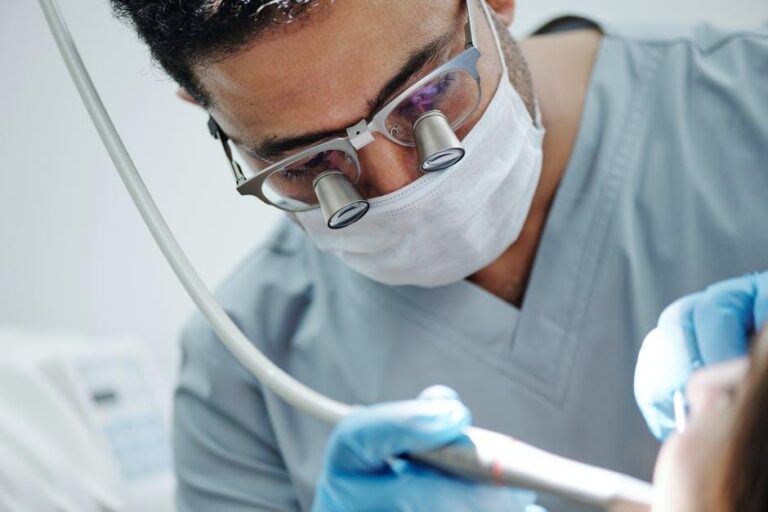The Benefits of Alveoloplasty in Dental Surgery
Welcome to the ultimate guide on a dental procedure that can transform smiles and enhance oral health – alveoloplasty! If you’ve ever wondered about improving the shape of your jawbone after a tooth extraction or preparing for dental implants, then alveoloplasty is a term you should get familiar with. In this blog post, we’ll delve into what exactly alveoloplasty entails, who might benefit from it, the procedure itself, recovery process, cost considerations, and much more. So sit back, relax, and let’s explore the world of alveoloplasty together!
Understanding Alveoloplasty
Alveoloplasty is a dental surgical procedure aimed at reshaping and smoothing the jawbone’s ridge after tooth extraction. This process is crucial for maintaining proper oral function and aesthetics, especially when considering restorative treatments like dentures or implants. By addressing irregularities in the bone structure left by extractions, alveoloplasty ensures a more comfortable fit for future dental appliances and enhances overall oral health.
The purpose of alveoloplasty goes beyond cosmetic improvements; it plays a significant role in supporting long-term dental stability and functionality. Whether you’re preparing for implant placement or simply seeking optimal oral health outcomes post-extraction, alveoloplasty can be a game-changer. Understanding the ins and outs of this procedure is key to making informed decisions about your dental care journey.
What is alveoloplasty?
Alveoloplasty is a dental procedure that plays a crucial role in preparing the mouth for restorative or cosmetic dentistry. It involves reshaping and smoothing the jawbone’s ridge to ensure proper healing after tooth extraction, allowing for optimal prosthetic fitting or implant placement.
During alveoloplasty, the oral surgeon carefully contours the bone structure to create a more even surface, promoting efficient healing and reducing the risk of complications. This meticulous process aims to enhance both functionality and aesthetics in dental treatments.
By undergoing alveoloplasty, patients can experience improved oral health outcomes and greater satisfaction with their dental procedures. The precise nature of this surgery highlights its significance in achieving successful long-term results for various dental interventions.
Understanding what alveoloplasty entails can provide valuable insights into its benefits and importance within the realm of dental surgery.
Who needs alveoloplasty?
Alveoloplasty, although sounding complex, is a common procedure in the field of dental surgery. But who exactly needs this procedure? Well, individuals who have uneven or sharp edges of bone in their mouth following tooth extraction may benefit from alveoloplasty. This can help create a smoother surface for dentures or implants to be placed more comfortably.
Moreover, patients with irregularities in their jawbone structure that could impact the fit and function of future dental prosthetics might also require alveoloplasty. By reshaping the bone through this procedure, it ensures a better foundation for any further dental work needed.
Those seeking improved oral health and enhanced aesthetics should consider consulting with a qualified dentist to determine if alveoloplasty is the right option for them.
The purpose of alveoloplasty
Alveoloplasty serves a crucial purpose in the realm of dental surgery. By reshaping and smoothing the jawbone’s ridge after tooth extraction, it paves the way for optimal healing and ensures proper fitting of dentures or dental implants. This procedure is not only about aesthetics but also plays a significant role in maintaining oral health.
The primary goal of alveoloplasty is to create a suitable foundation for future dental work by eliminating irregularities or sharp edges on the bone surface. This process facilitates better gum tissue closure post-extraction, reducing the risk of infections and promoting faster recovery. Alveoloplasty sets the stage for successful restorative procedures while enhancing overall oral function and comfort for patients.
In essence, the purpose of alveoloplasty extends beyond mere cosmetic enhancements; it is a fundamental step towards achieving long-lasting oral wellness and ensuring that patients can enjoy a healthy smile for years to come.
Alveoloplasty Procedure
Alveoloplasty is a surgical procedure commonly performed in dental surgery to reshape and smooth the jawbone after tooth extraction. The process involves contouring the bone to create a more even surface, promoting proper healing and preparing for future dental work.
During an alveoloplasty procedure, the dentist will use specialized tools to carefully remove excess bone material and ensure that the remaining ridge is uniform and free of any irregularities. This precision is crucial for optimal oral health outcomes and can contribute to enhanced aesthetic results as well.
To begin, local anesthesia is administered to numb the treatment area, ensuring patient comfort throughout the procedure. Once prepared, the dentist will meticulously sculpt the bone using precise techniques tailored to each individual’s unique anatomy.
Following alveoloplasty, patients can expect some swelling and discomfort which can be managed with prescribed medications and appropriate post-operative care. Proper healing time varies but typically ranges from a few weeks for full recovery.
By undergoing alveoloplasty, individuals can benefit from improved oral health outcomes, enhanced aesthetics, and better overall function of their teeth and gums. This procedure plays a vital role in setting the stage for successful dental treatments down the line.
How is alveoloplasty accomplished?
Alveoloplasty is a surgical procedure commonly performed in dental surgery to reshape and smoothen the jawbone after tooth extraction. The process involves meticulous planning and precision to ensure optimal results for patients seeking improved oral health and aesthetics.
During alveoloplasty, the dentist carefully contours the bone structure to create a more even surface, promoting proper healing and reducing the risk of complications. This delicate procedure requires expertise and attention to detail to achieve desired outcomes effectively.
Using specialized instruments, the dentist skillfully reshapes the bone, removing any irregularities or sharp edges that could impede healing or cause discomfort. By achieving a smooth contour, alveoloplasty helps enhance the overall appearance of the jawline while promoting better fitting for dentures or implants if needed.
Through careful planning and execution, alveoloplasty plays a crucial role in ensuring patients receive comprehensive care during their dental treatment journey.
Steps of the procedure
Alveoloplasty is a precise dental surgery procedure that involves reshaping the jawbone to create a smoother surface for dentures or implants. Here are the steps involved in this intricate process:
The dentist will administer local anesthesia to ensure you are comfortable throughout the procedure. Once numb, they will carefully remove any excess bone or tissue from the area needing treatment.
Next, specialized tools are used to reshape and contour the bone structure according to the desired outcome. This step requires precision and skill to achieve optimal results.
After shaping the bone, sutures may be placed to help with healing and secure the newly contoured area. The incision site is then closed up, marking the completion of the alveoloplasty procedure.
It’s essential to follow post-operative care instructions provided by your dentist for proper healing and recovery after alveoloplasty.
Anesthesia and preparation
When it comes to alveoloplasty, ensuring the patient’s comfort and safety during the procedure is of utmost importance. Anesthesia plays a crucial role in numbing the area being worked on, making the surgery virtually painless for the individual undergoing it.
Before the surgery begins, thorough preparation is necessary to set the stage for a successful alveoloplasty. This typically involves a consultation with your oral surgeon to discuss any medical conditions or medications that might impact anesthesia or recovery.
During this consultation, your surgeon will determine which type of anesthesia is most suitable for you based on factors like your overall health and the extent of the procedure. Local anesthesia is commonly used to numb specific areas, while general anesthesia may be recommended for more complex cases.
Regardless of the type chosen, following pre-operative instructions such as fasting before surgery will help ensure a smooth and safe experience. Trusting in your dental team’s expertise in administering anesthesia can give you peace of mind as you prepare for alveoloplasty.
Recovery and Healing Process
After undergoing alveoloplasty, the recovery and healing process is a crucial aspect of ensuring successful outcomes. Patients can expect some discomfort, swelling, and minor bleeding in the days following the procedure. It’s important to follow post-operative care instructions provided by your dentist or oral surgeon to promote proper healing.
During the initial days after alveoloplasty, it’s recommended to stick to a soft diet and avoid strenuous physical activities. Swelling can be managed with ice packs applied externally for short intervals. Pain medication prescribed by your dental professional can help alleviate any discomfort during this time.
Proper oral hygiene is essential during the recovery period to prevent infection and promote healing. Gently rinsing with salt water as directed can aid in keeping the surgical site clean. Follow-up appointments will be scheduled to monitor progress and ensure everything is healing as expected.
Remember that each individual’s healing process may vary, so patience and adherence to post-operative guidelines are key factors in achieving optimal results following alveoloplasty.
Cost and Consultation
When considering alveoloplasty, understanding the cost and consultation process is essential. The cost of alveoloplasty can vary depending on factors like the extent of surgery needed, location, and individual dentist fees. It’s crucial to consult with your dentist to get an accurate estimate tailored to your specific case.
During a consultation for alveoloplasty, your dentist will evaluate your oral health, discuss treatment options, answer any questions you may have, and provide details about the procedure itself. This initial meeting is an opportunity for you to gain insight into what to expect during alveoloplasty and address any concerns or uncertainties.
Some dental insurance plans may cover a portion of the costs associated with alveoloplasty. It’s advisable to check with your provider beforehand to understand coverage details and potential out-of-pocket expenses. Remember that investing in your oral health through procedures like alveoloplasty can lead to long-term benefits for both aesthetics and functionality.
Leveraging Alveoloplasty
Alveoloplasty, a procedure often overlooked but with significant benefits in dental surgery. Leveraging alveoloplasty can enhance the success of various dental treatments by providing a smooth and properly shaped bone structure for implants or dentures to be placed securely. This procedure is not just about aesthetics; it plays a crucial role in ensuring long-term oral health and functionality.
By optimizing the jawbone’s shape and density through alveoloplasty, patients can experience improved stability and durability of their dental restorations. This leads to better chewing abilities, speech clarity, and overall comfort when wearing prosthetics. Moreover, the enhanced bone structure resulting from alveoloplasty promotes better gum health and reduces the risk of complications post-surgery.
For individuals considering dental implants or dentures, leveraging alveoloplasty can significantly increase the success rate of these procedures while minimizing potential risks or discomfort during recovery. It is essential to consult with a qualified oral surgeon to assess whether alveoloplasty is suitable for your specific case before proceeding with any restorative treatment.
considerations
When considering alveoloplasty, there are several factors to keep in mind. It’s essential to consult with a qualified oral surgeon to discuss your specific needs and expectations from the procedure. Understanding the potential risks and benefits is crucial before making a decision.
Another consideration is your overall dental health. Alveoloplasty may be recommended as part of a larger treatment plan for issues like tooth extraction or denture placement. Being aware of how alveoloplasty fits into your long-term oral care can help you make an informed choice.
Financial considerations also play a role. While cost should not be the sole determining factor, it’s important to understand the expenses involved in alveoloplasty and whether it aligns with your budget.
Think about post-operative care and recovery time. Ensuring you have adequate support during healing can impact the success of the procedure. It’s vital to weigh all these considerations before moving forward with alveoloplasty.
Ongoing Research and Comparisons
Ongoing research in the field of alveoloplasty is crucial for advancing dental surgical techniques and improving patient outcomes. Dental professionals are continuously exploring new materials, tools, and methods to enhance the effectiveness and efficiency of alveoloplast’y procedures.
Comparative studies are being conducted to evaluate the benefits of different approaches to alveoloplast’y, such as traditional surgery versus minimally invasive techniques. Researchers are also investigating the long-term results of alveoloplast’y on patients’ oral health and overall well-being.
By analyzing data from these research efforts, dentists can make informed decisions about the most suitable treatment options for their patients. This ongoing exploration helps ensure that alveoloplast’y continues to evolve into a safer, more precise, and less invasive procedure.
Stay tuned for future developments in alveoloplast’y research as experts strive to provide optimal care for dental surgery patients.
Conclusion
Alveoloplast’y is a valuable procedure in the field of dental surgery, offering numerous benefits for patients requiring optimal oral health and functionality. By reshaping and smoothing the jawbone after tooth extraction. Alveoloplast’y contributes to enhanced aesthetics, improved denture fit, and reduced post-operative complications. Understanding who may benefit from alveoloplast’y. The steps involved in the procedure, recovery process, costs associated with it. As well as ongoing research advancements can guide individuals considering this treatment option.
It’s essential to consult with a qualified dental professional to determine if alveoloplast’y is suitable for your specific needs. With proper care and attention during the healing period following surgery. Patients can experience significant improvements in their oral health and overall quality of life. Stay informed about new developments in alveoloplast’y techniques and technologies to make well-informed decisions about your dental care. Embrace the potential advantages that alveoloplast’y can offer for your oral health journey today!







